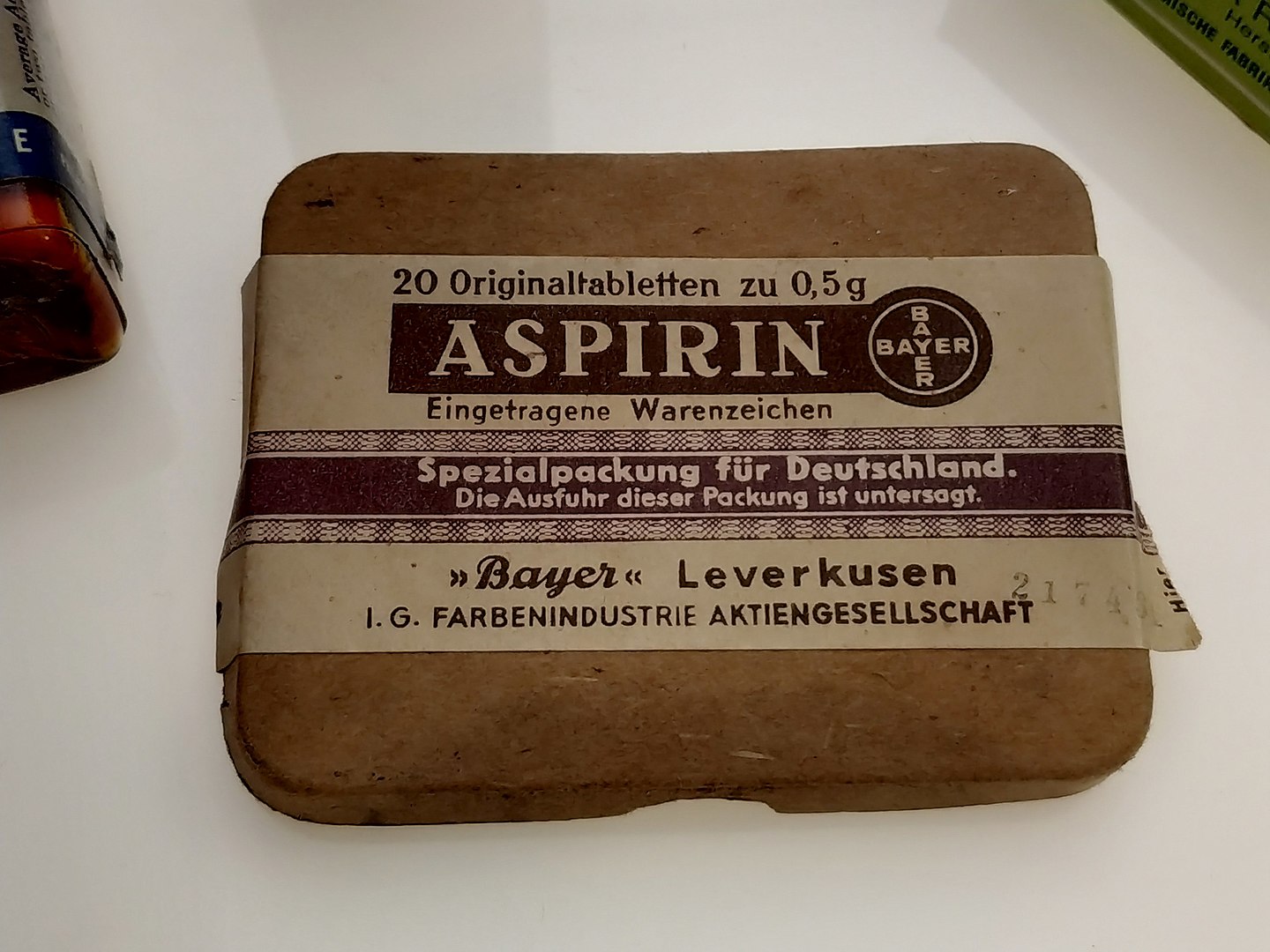Who was Felix Hoffmann?
Felix Hoffmann was born in 1868 in Ludwigsburg, Swabia, the son of a manufacturer. He studied pharmacy and chemistry at the University of Munich, graduating in 1891 and receiving his doctorate in 1893. His professor Adolf von Baeyer (who won the Nobel Prize in 1905 for synthesizing dyes) recommended him for a job as a chemist at the “Farbenfabrik vorm. Friedr. Bayer & Co” (better known as Bayer).


Hoffmann supposedly was looking for a medication to ease his father’s rheumatic pain. Mostly by chance, he created acetylsalicylic acid (ASA) in a pure and stable form on August 10th, 1897. It could be used to relieve pain, lower fever, and had anti-inflammatory properties. We know this drug as aspirin.

Hoffmann was also involved in the development of heroin. Heinrich Dreser, head of the experimental pharmacological laboratory at Bayer, asked Hoffmann to produce codeine by acetylating morphine, however a different substance was produced, heroin. The new drug heroin couldn’t be patented, just like aspirin couldn’t, because an English chemist had already discovered it in 1874.
Hoffmann retired from Bayer in 1928 as the head of pharmaceutical marketing department, and died in Switzerland on February 8th, 1946. He was never married and had no known children.
Acetylsalicylic Acid - Aspirin
It had long been known that willow bark as well as other plant materials had fever-reducing and pain-relieving effects, and chemists had been working on isolating the salicylic acid from the bark. In 1874, Heyden Company manufactured salicylic acid but unfortunately it had some nasty side effects, like stomach irritation and very low tolerance in some patients.
When Hoffmann was able to produce the substance in a stable and pure form in 1897, experiments were undertaken, on the scientists themselves, animals, and finally hospital patients. The substance was named “Aspirin”, “A” for acetyl and “spirin” for spirea, a shrub that is an alternative source for salicylic acid also known as meadowsweet. The product was launched in 1899 as a powder and made Bayer famous.


While Bayer recognized the product’s enormous potential as a pharmaceutical they couldn’t get a patent for it. Acetylsalicylic acid had been synthesized before by a French and later by a German chemist. Both scientists were not able to produce the substance in a pure and stable form like Hoffmann did, but a patent was still not granted.
Bayer however marketed the new wonder drug aggressively and obtained a patent for aspirin in the United States. There, the company had a production monopoly from 1900 until 1919 when they had to sell as part of the reparations Germany had to pay after WWI. Sterling Productions of Wheeling, W.VA, acquired the plant but was unable to keep the trademark which is one of the reasons aspirin is easily available as an over-the-counter medicine.


Arthur Eichengrün - overlooked by history?
If you have never heard of Arthur Eichengrün in connection with Aspirin, you are not alone. While Felix Hoffmann was inducted into the National Inventors Hall of Fame in 2002, Eichengrün has been forgotten.
Arthur Eichengrün was born in 1867 and received his doctorate in chemistry in 1890 from the Polytechnical School in Aachen. He worked for different companies and held 47 patents. When working at Bayer, he developed the medicine Portargol for gonorrhea in 1897. With Theodor Becker he developed the first soluble cellulose acetate materials and the process for producing and developing cellulose acetate film.


He founded his own company which he had to close once Hitler came into power because Eichengrün was Jewish. He was renowned in his field and was therefore not imprisoned, at least not until 1944 when he was sent to Theresienstadt. He survived the concentration camp and in 1949 wrote a paper chronicling the invention of aspirin that happened under his supervision. Not much credit was given to his claim to have been instrumental in the synthesizing of acetylsalicylic until Walter Sneader of the University in Glasgow reexamined the case and found Eichengrün’s account of events credible.
One reason why Eichengrün might be telling the truth is the fact that Hoffmann is not mentioned as the inventor of Aspirin until 1934 in a footnote in a German encyclopedia. It’s not surprising that under the Nazi regime any Jewish contributions to science and culture were written out of history books, and that Eichengrün couldn’t set the record straight in 1934 because of his status as a Jew in Germany.
Heroin for heavy coughs
What sounds incredulous was once reality. Heroin was sold by Bayer as a remedy for heavy coughs, pain after childbirth, and pain from war injuries. It was also used to control certain mental disorders and prepare patients for anesthesia. Obviously, that was before people realized how highly addictive heroin was. It has been banned in most countries since the 1930s.
Felix Hoffmann played a role in the development of heroin when he followed Heinrich Dreser’s lead to produce codeine by acetylating morphine. Codeine is a weaker derivative of opium than morphine and Dreser was studying how codeine affected breathing.


Aspirin today
Aspirin works almost against anything from pain, fever, inflammation to prevention of heart attacks and strokes. 70 million pounds of Aspirin are produced worldwide, and Americans consume around 15 billion tablets every year.
In Germany, more people take ibuprofen against minor pain than aspirin.
 Mehr Infografiken finden Sie bei Statista
Mehr Infografiken finden Sie bei Statista Featured image: Old package of Aspirin, around 1940s. By Nikolay Komarov – Own work, CC BY-SA 4.0, https://commons.wikimedia.org/w/index.php?curid=93642808


